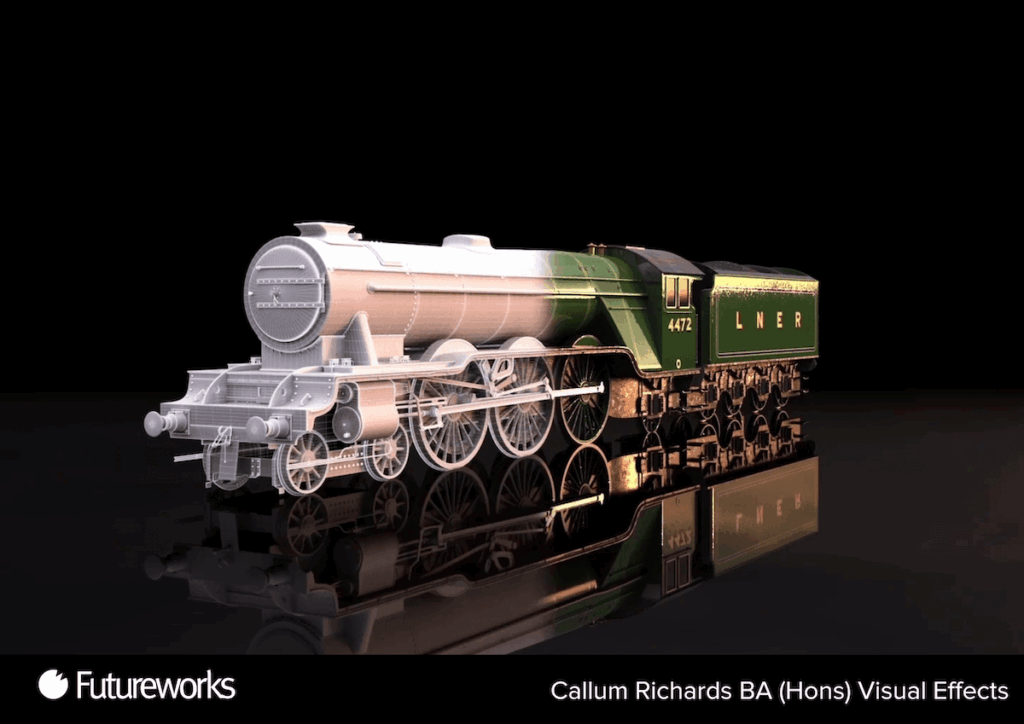This website uses cookies so that we can provide you with the best user experience possible. Cookie information is stored in your browser and performs functions such as recognising you when you return to our website and helping our team to understand which sections of the website you find most interesting and useful. For full details on the cookies used on our website, please visit our Cookies Policy page.
YEAR 1
Introduction to Compositing (40 credits)
Working with industry standard software and a brief provided by a local production house, you will be introduced to the core 2D compositing skill used by the leading production houses internationally. In the second semester, you will learn how to track real world cameras to invisible composite 3D asset into a filmed plate.
Introduction to 3D Modelling (20 credits)
You will learn the fundamentals of 3D modelling to enable you to replicate real world objects in industry standard 3D software. You will be introduced to creative and technical skills such as good edge workflow, UV mapping, texturing, lighting, and rendering to create a 3D turntable artefact, which showcases the beginnings of Photorealism.
Content Creation (40 credits)
This module will introduce key pre-production, production, post-production, camera, lighting techniques and technologies to give you an informed awareness of the medium and context in which your creative input as visual effects artists will be employed.
History of Visual Effects (20 credits)
Lectures focusing on the history of film, VFX and media, giving context to the skills learned in other modules and how these emerged historically.
YEAR 2
Studio Project (40 credits)
This module will introduce you to working as part of a team to replicate a studio’s project pipeline for VFX. As part of an open brief, you will use creative practices to generate digital environments and environmental FX through the use of 3D modelling pipeline, virtual production with the Unreal Engine, dynamics, simulation and visual effects on set supervision.
Character Creation and Motion Capture for VFX (40 credits)
Will introduce you to advanced 3D modelling techniques such as digital sculpting by creating a likeness of a character from popular media in addition to this you will utilise motion performance-based animation and its integration with an animation-ready digital character.
Motion Graphics & UI Development (20 credits)
This module will explore the theory, creative and practical development of graphic design in relation motion graphics and as part of user interface development for film, television, and advertising. Part of this will be looking at key graphic design techniques, as well as animation principles, 3D, and simulation-based motion graphics.
Contemporary Visual Effects (20 credits)
A continuation of the History of Visual Effects module, only now it’s focused on the contemporary moment, current issues, and trends.
YEAR 3
Honours Project (60 credits)
This is your chance to showcase your skills and specialist areas, working on a project you design in collaboration with the module leader. In addition, this module focuses on industry employability: everything from CVs, websites, showreels and portfolios, to how and where to network, interview practice and how to find work as a freelancer.
Professional Studio Project (40 credits)
This module builds on Studio Project, with the emphasis on allowing you to specialise in areas of a group project. Your group will have full creative freedom with support from the module tutor.
Professional Specialism (20 credits)
In this module, you will undertake research into the historical, current, and future areas of the visual effects techniques where you take the lead within the Professional Studio Project. The module is linked to your future goals and through networking opportunities, enables you to make industry connections.
WHAT ARE CREDITS?
As a guide, 20 credits typically represents around 52 hours of tutor contact time (e.g. lectures/workshops/feedback) and 148 hours of self-study time (usually over the course of a semester). These numbers may increase or decrease depending on the nature, length and level of the module, especially towards the end of the course.




